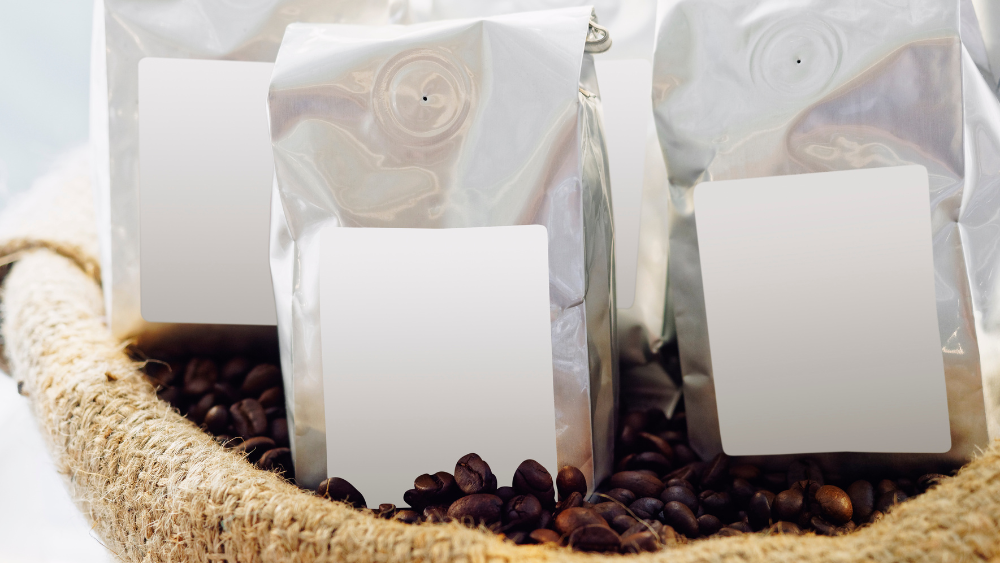The packaging and labelling are the consumer’s first encounter with your product and brand. Ensure that the design of both these elements grabs your customer's attention in a way that influences the mental process needed to drive purchase intent.
Your packaging and labels should reflect the emotional attachment you want your customers to connect with your product. That is why you need a strategic plan for what your product should convey to the customer.
Sensory marketing triggers sales
Sensory marketing or branding is a marketing technique that aims to seduce the consumer by triggering their senses to influence emotions and behaviour. That's why label design is one of the determining factors for whether a consumer chooses to make a purchase or not.
First and foremost, you need to have a clear vision of what you want your product label to express. That way, potential buyers browsing their options can categorize your product quickly.
- Is it an exclusive product or of a more affordable kind?
- Does the packaging contain something industrial, or should it be perceived as something organic?
- Is it vintage or brand new?
These are all impressions you have the opportunity to control through the label by using the principles behind sensory marketing.
Read more: How to design attention-grabbing labels and packaging
How label design influences cognitive processes
"Neural Correlates of Impulsive Buying Tendencies during Perception of Product Packaging" is an exciting study that shows precisely how product decoration either triggers the brain's reward centre or its regions associated with negative emotions. The results show that product decoration can lead to impulsive purchases – even if the customer didn't intend to buy anything at all.
 Your product, packaging and label design affect cognitive processes such as:
Your product, packaging and label design affect cognitive processes such as:
- Recognition
- Perception
- Attention
- Learning
- Higher reasoning
Two label design elements work particularly well in terms of controlling these processes:
- Colour scheme
- Texture
They do so as they affect the senses of vision and touch.
Colours evoke an immediate reaction
Colours significantly impact behaviour and cognitive processes, but the effect goes beyond that. Research shows that approximately 62-90 per cent of the buyer's decision-making process is based on colour alone. Moreover, different colours each have strong symbolism here in India. In many cases, they are assigned religious or cultural meanings.
To date, there are no studies on the exact emotions that different colours tend to evoke.
Nevertheless, the marketing and design industry recognizes certain local theories about what the different colours express to the buyer about the product and your brand – and how the buyer might feel when using the product:
- Do you want your product to represent freshness, energy, and knowledge or stimulate the mind? Use yellow.
- Do you want your product associated with positivity, love, courage, or power? Use red.
- Do you want your product associated with enthusiasm or purity? Use orange.
- Do you want your product to appear playful or feminine? Use pink.
- Do you want your product to symbolise something clean, soothing, or confident? Use blue.
- Do you want your product to represent nature, new beginnings, sustainability, or life? Use green.
- Do you want your product to represent quality, exclusivity, or creativity? Use purple.
Label textures that lead to must-have purchase decisions
The two marketing elites, Lawrence Williams and Joshua Ackerman, said it well in their Harvard Business Review article "Please Touch the Merchandise":
"Physically holding products can create a sense of psychological ownership, driving must-have purchase decisions."
So, what does it take to make a consumer want to pick up and touch your product? The colour choice, communication and price may be enough, but what if the texture on the label itself could encourage physical touch?
If you want to improve on a standard label material, we have several strategic ways to tempt your customer:
- With a tactile varnish, you can create a realistic 3D feeling, e.g. the illusion of a raindrop or a grain of sand on your label.
- With a textured varnish, you can make the label look and feel like leather, snakeskin, or even a pineapple. Add a scent to the label, and the brand experience is complete!
- With the Skanem India Soft & Gentle texture, the label is extra soft to the touch, making the product appear gentle, soothing, and smooth.
- With our Scent Release, you can add a bespoke scent to the label. The fragrance function is a clever way to attract new customers while reminding previous buyers that the product is nearby.
Read more: Provide better customer experience through your labelling and packaging
Decades of label and packaging design knowledge
Increased focus on the psychological aspect behind label and packaging design is a growing and exciting topic. While undoubtedly extensive, it's also a field of development that we in Skanem India have been involved in for decades – locally and internationally.
We get genuinely excited every time new and old clients, big or small, want to brainstorm with us to fulfil their label's true potential. After all – our goal is not merely to deliver your labels; we also want to make sure that your labels enable your products to sell – more.
Get in touch here and brainstorm design ideas with us!








